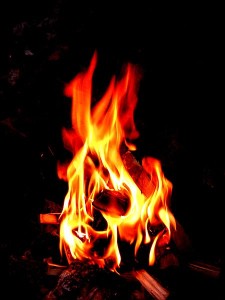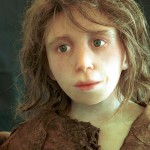
This post was originally posted on 8/12/2010, so probably not everybody’s already read it and it’s really nice. I (Ann speaking) love Heather’s first story here, and I love her second one. I love the idea of people saying, “Come warm yourself by our fire.”
Last summer, while roaming around Ecuador on a magazine assignment, I had a rather strange experience at an old Spanish hacienda that doubled as a country inn. The owners took in paying guests to help finance the upkeep of the 16th century architecture, and an archaeologist-acquaintance had made a reservation for me there, knowing my love of old places. But when I arrived after sunset, dropped off by a local farm truck, the place was dark and deserted looking. The door was locked. I knocked, then pounded to no avail.
Just as I was beginning to think I’d have to hike out to the road and flag down a lift to the nearest town, a young woman appeared at the door. She eventually let me in and led me down a long, dark corridor. I was the only guest that night: she was the only person on duty. And the entire place seemed almost haunted to me. But the room she led me to had a big stone fireplace opposite the bed, and someone had left a generous supply of dried eucalyptus.
I built a fire and settled in for the evening, cozy, warm and suddenly very happy. And as I drifted off to sleep, watching the flames dart back and forth, I marveled once again at this intimate connection we have to fire. Quite apart from its life-giving warmth, fire, it seems to me, has an almost uncanny power to comfort and relax.
As it turns out, our Neanderthal kin were also very fond of watching a flickering fire as they drifted off to sleep.

New research by Dan Cabanes, an archaeobotanist at Weizmann Institute of Science in Rehovot, Israel, and his colleagues has just revealed the microscopic remains of grass beds made by Neanderthals in a cave in Spain. Dated between 53,000 and 39,000 years ago, these beds lay next to the burnt remains of once roaring fires.
Cabanes and his colleagues, I hasten to add, did not find any of the grass bedding itself: the fragile grass leaves and stems had long ago rotted away. But as the team excavated around the hearth, they took samples of the sediments there and in the fireplace itself. Back in the lab, Cabanes put these samples under the microscope, curious to see what they might contain.
The samples, he soon discovered, were peppered with phytoliths, tiny microscopic particles of silica or other minerals that occur naturally in plants. The shape of these particles differs according to plant taxon and sometimes even according to the part of the plant that produced them. A stem phytolith, for example, might look very different from a leaf phytolith.
Cabanes identified the distinctive grass phytoliths in the sediments taken from around the Neanderthal hearth in Esquilleu Cave. Indeed, he detected them in several different layers. By contrast, he found mainly wood and bark phytoliths in the hearth. To Cabanes, it suggested that the cave’s Neanderthal inhabitants repeatedly built grass beds near a wood-burning fireplace.
I like the image that all these microbotanical remains conjure up–a Neanderthal child perhaps curling up in a bed that smells sweetly of summer and watching the flames dance on an evening long, long ago.
Upper Photo courtesy of Einar Helland Berger
Lower Photo shows a reconstruction of a Neanderthal child made by a research team from the Anthropological Institute, University of Zürich
- Christoph P.E. Zollikofer, Zürich — 3D skull reconstruction
- Marcia S. Ponce de León, Zürich — 3D skull reconstruction
- Elisabeth Daynès, Paris — model reconstruction (skin, eyes, hair)
Picture taken by Christoph P.E. Zollikofer